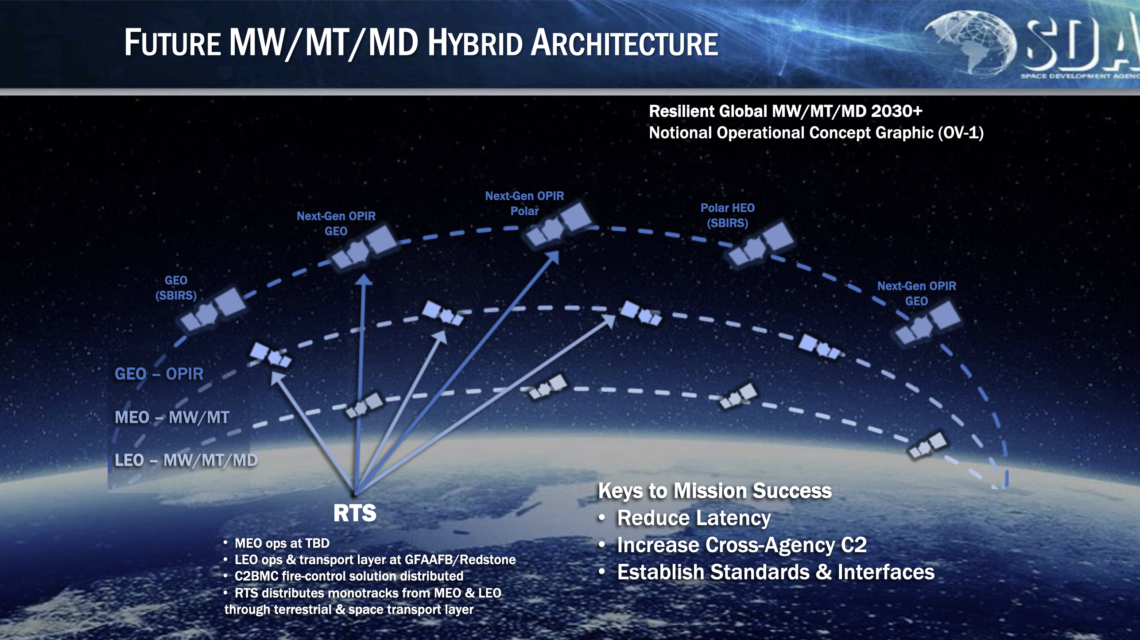WASHINGTON — The Space Development Agency’s network of sensor satellites in low Earth orbit — known as Tracking Layer Tranche 1 — will not include seven satellites made by Raytheon Technologies as originally planned.
“SDA is reevaluating and considering re-scoping Raytheon’s Tranche 1 Tracking Layer work,” an agency spokesperson said in a statement in response to questions from SpaceNews.
The spokesperson said the agency could not comment on the specifics of why Raytheon will not be delivering seven satellites that the company was expected to build under a $250 million contract SDA awarded in March 2023.
The Tracking Layer Tranche 1 is the first deployment of a multi-phase plan to develop a global missile warning and tracking system. SDA in July 2022 ordered 14 satellites from Northrop Grumman and 14 from L3Harris Technologies.
Raytheon was one of the bidders that didn’t make the first cut. But SDA later decided to add seven Raytheon satellites as the fifth plane of the constellation after Congress increased the agency’s 2023 budget by $250 million specifically to pay for missile-tracking satellites. The $250 million contract also includes ground operations and support services.
Speaking March 18 at the Satellite 2024 conference, SDA Director Derek Tournear said the agency by late 2025 expects to have 28 wide field-of-view missile tracking satellites in operation on orbit, and he did not mention the other seven.
The SDA spokesperson noted that removing those seven satellites should not significantly impact the performance of the missile-tracking network.
‘Minimum viable product’
“It’s important to keep in mind that the minimum viable product for Tranche 1 Tracking is 28 missile warning/missile tracking space vehicles that deliver the minimum viable capability of regionally persistent warning and tracking of missile threats, including advanced threats like hypersonic glide vehicles,” said SDA…
Read the full article here


